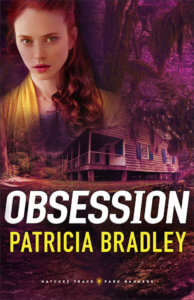How many times have you read a book where the villain reminds you of the old black-caped character twirling his handlebar mustache and laughing maniacally? Readers may have settled for that characterization a hundred years ago or even twenty-five years ago, but now they are looking for more complex characters and a more perfect villain.
Just like your hero needs flaws to keep from being boring, your perfect villain needs positive attributes to make them interesting. Writers should spend as much time creating their villain as they do their hero. Here are tips to think about.
Villains should be believable and at times, even likeable. Think Hannibal Lecter. Despite his great delight in killing and cannibalizing his victims, his character fascinates readers.
Why? For one thing, he has many admirable qualities. He’s always polite, loyal, brilliant, and possibly the best social engineer of all time. Author Thomas Harris created a great example of a villain in Hannibal Lector.
Let’s start with his name. Hannibal Lector. The syllables easily roll off the tongue. Much like Professor Moriarty, J. R. Ewing, Norman Bates, Lord Voldemort, Freddy Kreuger, and Captain Hook, to name a few. If you’ll notice, one name often has two or more syllables and is paired with a one-syllable name.
Caution—when you find your perfect name, be sure to google it to make sure it doesn’t belong to someone who might sue you for defamation of character.
It’s easy to give your villain faults; just don’t stop there. Like Lecter, your character needs likeable traits as well. The reader needs to believe something is redeemable about him (I’m using the male pronoun to avoid the grammatically awkward his/her). It’s the same whether your villain is a man or a woman.
Don’t forget the advice of Christopher Vogler in The Writer’s Journey—the villain is the hero of his own story. You don’t have to agree that the villain’s goal is worthy or even legal, but you do need to understand why the villain thinks it’s worthy or doesn’t care that it’s illegal. From your villain’s perspective, what he’s doing is neither irrational nor wrong—he believes the end justifies the means.
So how do you put yourself in your villain’s head? It’s often a dark world out there, one you probably don’t like being in but must if you want to create a believable villain. You’re a nice person and maybe you think you don’t have anything to draw on, but think about the time someone you thought was your friend lied about you and you found out about it. What was your first visceral reaction?
You want to even the score. Maybe you even laid awake at night thinking about how to get your revenge. Now you’re in your villain’s head. Take those feelings and apply them to your character.
Most villains are narcissists and believe themselves to be superior to others. I’m not saying all narcissists are villains, but their worst traits can be good examples to use for your perfect villain.
On a personal note, I’ve known several narcissists. On the surface, they were charming, attractive, and projected power and magnetism. When we were in conversation, it was like we were the only ones in the room. It was only later, as I observed how they used people to get what they wanted, that I realized they were self-centered egotists and their interest in me was an illusion. I had something they wanted.
I’m sure you’ve known a narcissist or two as well. Study them. Find out what makes them tick. When I get ready to create a villain, I draw on those experiences as I create my character sketch. One narcissist I knew was fifty years old and still trying to prove he was a better man than his father. Why? Because he’d never gotten his father’s approval. That is a good wound for your villain to carry.
Speaking of wounds, make sure your perfect villain has one. Give him a backstory that explains why he’s the way he is. What wound in his background has he never gotten over? It eats at him, and if he can get that one thing—often the same thing the hero is striving for—his life will be complete. The wound gives him a reason for his goal.
Also, give your villain competing values, and at the end make him choose between the two. In the Godfather, the youngest son Michael has morals. He refuses to be a part of his father’s organization. But he also values family. When his father is almost killed by his archenemy, Michael has to choose between his morals and avenging his father’s shooter. Blood wins out over his morals.
Last of all, your villain must be worthy of your hero—make him stronger, smarter, and with more assets. Require your hero, who may have been an ordinary Joe at the beginning of your story, to step up and reach deep within himself to overcome his opponent. Easy? No. But you can do it!
These are a few ways to make your villain well-rounded. Please add any suggestions that come to mind.

About the Author: Patricia Bradley is the author of Justice Delayed, Justice Buried, Justice Betrayed, and Justice Delivered, as well as the Logan Point series. Bradley won an Inspirational Reader’s Choice Award in Romantic Suspense, a Daphne du Maurier Award, and a Touched by Love Award, and she was a Carol Award finalist. She is cofounder of Aiming for Healthy Families, Inc., and she is a member of American Christian Fiction Writers and Sisters in Crime. Bradley makes her home in Mississippi. Learn more at www.ptbradley.com.

About the Book: When shots are fired at park ranger and historian Emma Winters within the Natchez Trace, she turns to law enforcement to figure out who’s behind the attack.
But the officer assigned to the case is the last person she ever wanted to see again, her ex-fiancé, Sam Ryker. Thrown together by the ensuing investigation, Emma and Sam must track down an obsessive stalker. With both their lives on the line, the pair must set aside their personal history and past regrets to put the culprit behind bars—and potentially find a second chance at love.
